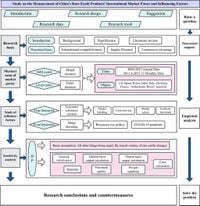In the high-stakes world of global industry, a new era of competition is unfolding—one defined not by oil or gas, but by metals and minerals essential to the technologies powering the 21st century. At the heart of this contest is China, which, according to recent reports from the Wall Street Journal and industry analysts, is tightening its grip on rare earths and other critical materials, sending ripples through global supply chains and raising the stakes for economic and geopolitical influence.
On November 19, 2025, China signaled a significant shift in its export policy for rare earth metals, a move that could reshape the landscape for industries from electric vehicles to defense systems. The new licensing regime, known as the Validated End-User (VEU) system, is designed to streamline exports for companies deemed non-critical by Beijing—those without ties to the US military—while imposing stricter controls on those connected to defense sectors. This selective approach, as reported by the Wall Street Journal, aims to balance trade relaxation with national security concerns, reflecting the complex interplay between economic pragmatism and strategic leverage.
Rare earths, a group of metals vital for manufacturing electric motors, wind turbines, smartphones, and high-performance magnets, have long been a linchpin in China’s industrial strategy. Their significance is even greater in military applications, where they are used in fighter jets, submarines, and sophisticated drone systems. China’s dominance in both extraction and processing—controlling about 90% of global rare earth separation capacity—gives it unparalleled influence over supply chains that underpin modern technology and defense infrastructure.
This latest policy twist comes on the heels of a broader, aggressive push by China to consolidate its dominance in the critical metals arena. As detailed in a November 18, 2025, industry analysis, China Minmetals Corporation, a state-owned giant, has embarked on a comprehensive strategy to integrate mining, processing, and manufacturing of essential minerals. The company’s overseas mining investments hit a decade-high $22.1 billion in 2024, with landmark deals such as the $1.875 billion acquisition of the Khoemacau copper mine in Botswana. This expansion is not just about securing resources; it’s about building an end-to-end system that extends China’s reach deep into global technology supply chains.
Chairman Chen Dexin of China Minmetals has been outspoken in his advocacy for “high-level scientific and technological self-reliance,” leveraging advanced tools like AI-driven exploration, space-based mapping, and underground sensing to enhance mineral reserve capabilities. In 2023, China already commanded 77% of global graphite production, 73% of cobalt refining, and 59% of lithium refining—figures that underscore its formidable position across the critical minerals spectrum.
This integrated approach is creating a new world order in critical metals, with clear winners and losers emerging. Companies aligned with China’s state-backed initiatives, such as Zijin Mining Group, Northern Rare Earth, Ganfeng Lithium, Tianqi Lithium, and China Rare Earth Holdings, are poised to benefit from secured supply chains and state support. Meanwhile, Western firms like Lynas Rare Earths in Australia and MP Materials Corp. in the US are gaining from diversification efforts and government backing, as countries scramble to reduce their reliance on Chinese supplies.
However, not everyone is positioned to thrive in this new environment. Tech giants and manufacturers heavily dependent on Chinese materials—think Intel, Nvidia, Tesla, Volkswagen, and General Motors—face daunting challenges. China’s willingness to deploy export controls on materials like gallium, germanium, and antimony has already caused disruptions in sectors from aerospace to clean energy. The risks are clear: supply chain interruptions, rising costs, and the imperative to re-engineer products or find alternative sources, a task as complex as it is costly.
The VEU regime, inspired by a similar US system in place since 2007, is Beijing’s latest tool in this strategic contest. Under the proposed system, companies classified as “validated end users” would enjoy expedited access to rare earths and other sensitive materials, provided they submit to site inspections and transparency requirements. Those with military connections, especially to the US defense sector, would face continued stringent scrutiny and potentially be excluded from simplified approvals. As the Wall Street Journal notes, the details of the system are still being hammered out, and China’s Ministry of Commerce has yet to comment officially.
The implications are profound, especially for industries straddling civilian and military markets. Automotive and aviation companies, which often serve both commercial and defense clients, could face complex compliance challenges and delays in procuring critical materials. For the US defense industry, which relies heavily on high-performance magnets and alloys made from rare earths, the new regime is a stark reminder of the vulnerabilities inherent in global supply chains.
Western governments are not standing still. The US Department of Defense is funding a rare earth production facility in Louisiana with over $22 million, while the Canadian government is supporting Ucore Rare Metals with up to CAD 36.3 million for rare earth production in Kingston, Canada. Ucore’s RapidSX technology is seen as a potential game-changer, promising to establish a Western-controlled supply chain for rare earths. Still, these efforts face an uphill battle against China’s entrenched advantages in scale, technology, and supply chain integration.
As China Minmetals and its peers continue their global expansion—marked by strategic partnerships, such as recent discussions with Poland’s KGHM on copper projects—the divide between China’s vertically integrated ecosystem and Western efforts to build alternative supply chains is becoming more pronounced. The consolidation of major rare earth producers into the China Rare Earth Group, which now controls about 70% of China’s output, further cements Beijing’s market control. The November 2025 Rare Earth Standards Conference in China signals a move to set global technical standards, potentially making life even harder for foreign competitors.
This bifurcation is fueling a new wave of resource nationalism, with countries looking to assert control over their mineral wealth and accelerate “de-risking” strategies. The era of unfettered global commodity markets is giving way to a more interventionist, policy-driven approach, with governments investing in domestic production, recycling, and strategic reserves. For investors and industry leaders, the coming years will demand close attention to policy shifts, technological breakthroughs in material substitution, and the evolving fortunes of both Chinese and Western companies navigating this volatile landscape.
The battle for critical metals is now front and center in the contest for economic and geopolitical supremacy. As China tightens its grip and the West scrambles to respond, the stakes—for technology, security, and the green energy transition—have never been higher.


